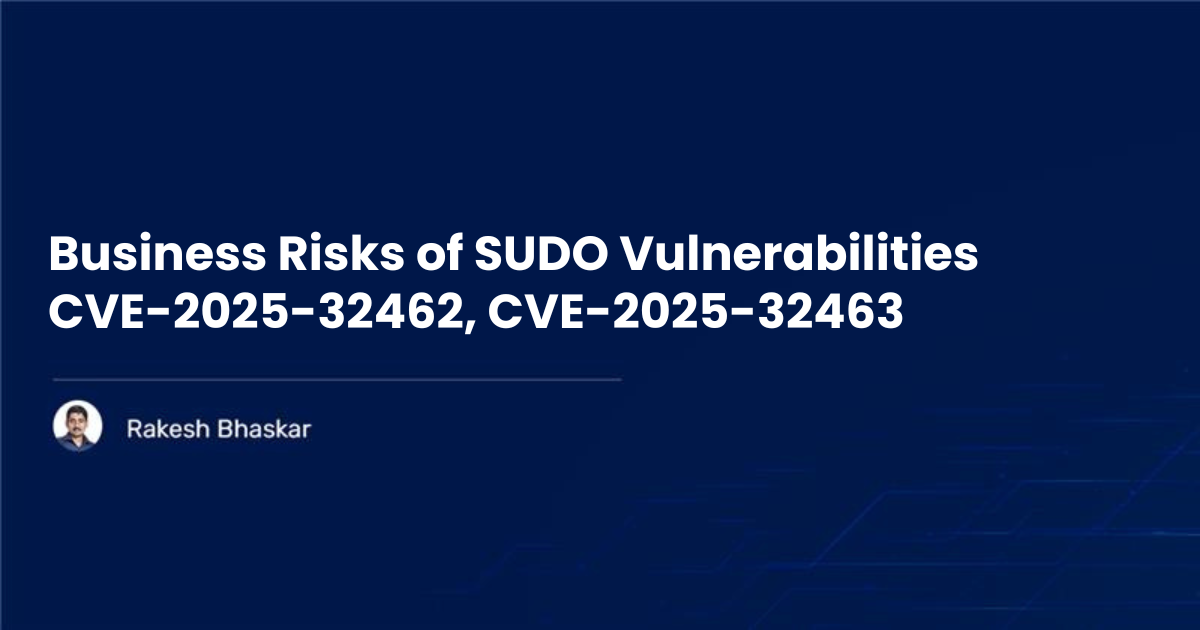Two recent SUDO vulnerabilities (CVE-2025-32462, CVE-2025-32463) let a local user gain root-level access and gain full control of the machine. Apply the vendor patches immediately and reduce SUDO privileges on critical systems to avoid data loss, operational downtime, and regulatory risks.
Here is how you can remediate SUDO vulnerabilities.
While the technical fixes are straightforward, the business consequences can be severe.
Top Business Risks due to these Vulnerabilities
- Data theft: Root access lets an attacker copy customer records, contracts, financial data, or IP.
- Operational downtime: An attacker can stop services, corrupt apps, or sabotage systems.
- Undetected persistence & extended breach: With root, attackers can hide backdoors and erase traces.
- Audit/log tampering: Attackers can alter or delete logs to hide activity.
- Regulatory and contractual exposure: Exposure of regulated data (PII, health, payment) leads to GDPR/HIPAA/PCI issues and contract breaches.
- Multi-tenant risk: On shared hosts or managed services, one compromised host can expose customers.
- Fraud & financial loss: Root control can enable fraudulent transactions or manipulation of financial systems.
- Higher recovery costs: Recovery from root compromise is expensive (forensics, legal, remediation)
Business Risk Use Case for CVE-2025-32462 and
CVE-2025-32463
A developer’s laptop or a CI/CD build server runs SUDO older than 1.9.17p1.
An attacker who has already compromised that local account (phishing or through a weak credential) exploits CVE-2025-32463 to escalate to root and uses CVE-2025-32462 behavior in shared configurations to run commands across other hosts in the estate.
Within hours, the attacker copies customer records, tampers with logs to hide activity, and plants a persistent backdoor that later spreads to production systems.
How they can be remediated
- Prioritize patching for affected systems. Treat SUDO fixes as high business priority, not just technical housekeeping.
- Identify high-value systems. Start with servers that host customer data, financial systems, and multi-tenant hosts.
- Limit SUDO privileges. Remove unnecessary SUDO rights and enforce the principle of least privilege.
- Improve detection on hosts. Monitor for unexpected privilege changes, suspicious processes, and unusual library loads.
- Test and roll out patches safely. Use staged deployments with rollbacks to avoid business disruption.


